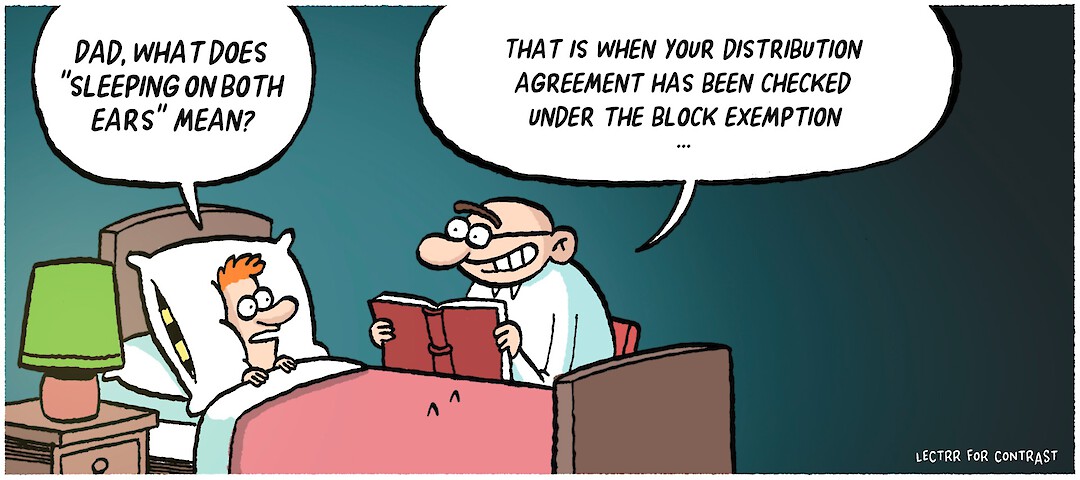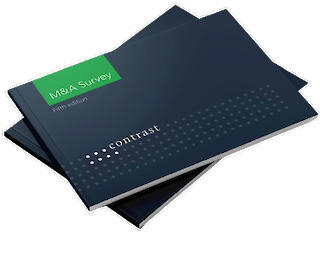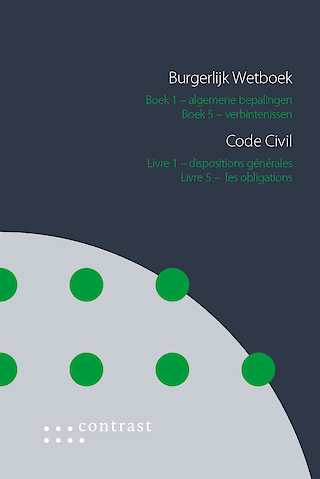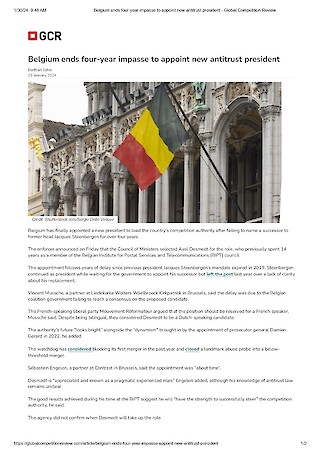In the Picture

Ticking the box for your distribution agreements
September 2021Imagine…
As a manufacturer, over the years you have built up an impressive network of independent distributors. However, you are now seeing more and more of your competitors opening up their own physical stores, as well as selling directly via their own websites. By no means an irrational move: they are giving their customers greater choice, while at the same time setting a good example for their distributors to emulate. Their stores and websites thus become the reference point for what they expect from their distributors.
You would like to follow their example and you have everything set up to launch such a dual distribution system of your own. But then you pick up alarming signals from here and there. Dual distribution has expanded greatly due to the increase in online sales, and it seems to be causing the European Commission serious concern. In the future, the European Commission apparently would like to subject dual distribution to additional conditions for being able to benefit from the Vertical Block Exemption Regulation (‘VBER’).
In the meantime, you are familiar with this VBER. You know that it helps you to make your distribution agreements legally valid. But you don´t really understand why your move towards dual distribution can present any problem at all in this respect. You thought that dual distribution was beneficial for competition. After all, the presence of your own stores and website leads to more, not less, competition on the market. So, did you sleep through all those economics lectures at university? You do not want to throw away all the work and money invested on the basis of a few rumours, so you give your lawyer a call.
A brief clarification.
Companies want to be certain that their distribution agreements are allowed under competition law. After all, clauses with restrictions that are not allowed are unenforceable. Worse, for some of those clauses a company can even incur a penalty. So it is very important that a company does not run afoul of competition law. But how does it go about ensuring this?
A first method entails that the company itself conducts an assessment as to whether its distribution agreements are allowed. This requires a self-analysis that, in practice, offers few guarantees.
Fortunately, there is a less risky method that does provide assurance. Companies can invoke a European Block Exemption from the European Commission that applies specifically to distribution agreements. The application of this VBER requires no more than a “tick-the-box” exercise. Certain application conditions must be met; a specific market share limit may not be exceeded (30%); and certain clauses must be avoided.
If all of the “boxes” are successfully ticked, then there is a match between the VBER and the clauses of the distribution agreement. In that case, in principle you and your company can sleep on both ears. You do not have to do any further analysis. Your agreement automatically benefits from an exemption, and you will not encounter any problems under competition law.
But just how does the “tick-the-box” exercise relate to dual distribution? After all, that is what the rumours are about.
Simple: one of the "boxes" that a company must be able to tick is that the distribution agreement is not being entered into between competitors. Does our ambitious manufacturer then automatically lose the benefit of the exemption when he starts competing with his distributors via his own store or website? No, the VBER makes an exception for dual distribution. However, the condition is that the independent distributor with whom the distribution agreement is concluded is not a competing manufacturer. There is no problem so long as only the supplier manufactures the products in question.
This exception - used by many manufacturers today - is now under pressure. The current VBER expires on 31 May 2022. During the revision process, the European Commission made it clear that it is concerned about the potential negative competition law consequences of dual distribution. Specifically, it fears that the supplier and the distributor (which are each other´s competitors when selling to end customers) will exchange business-sensitive information, such as information on prices, promotions or customers, and in this way will coordinate their market behaviour.
In order to contain these anti-competitive effects, the European Commission included an additional condition in its draft revision text. Manufacturers (and as of then importers and wholesalers as well) will have to be able to tick an additional “box”.
If the supplier and the distributor in a dual distribution situation have a combined market share of more than 10%, they will have to comply with certain playing rules relating to their mutual information exchange. What these rules might be as of June 2022 is still unclear. The European Commission refers to other regulations that will supposedly be dealing with this topic in the future.
The situation is currently unclear, which means that there is a lot of uncertainty on the issue. In any event, the European Commission can surely expect many reactions to its proposal on dual distribution. So the message is not to panic and to wait and see what will be in the definitive texts. However, it is definitely a development that must be watched closely.
Concretely
- Distribution agreements often contain all kinds of restrictions: exclusive purchase obligations, non-compete clauses, territorial restrictions, customer restrictions, etc.
- If you make use of such restrictions in your distribution agreement, you will always have to verify whether they are in compliance with competition law.
- An especially important instrument for doing such a review is the European Block Exemption that is applicable to vertical agreements (Regulation no. 330/2010, also referred as the VBER). This Block Exemption expires on 31 May 2022 and the Commission is busily working on its replacement.
- One of the most striking adaptations that the European Commission has included in its initial drafts deals with dual distribution. Dual distribution is the formula under which the supplier (manufacturer, importer, wholesaler) competes for end customers with its independent distributors.
- It is above all the issue of information exchange in case of dual distribution that appears to be causing the European Commission concern.
- We have to wait and see whether this stricter approach will make its way into the definitive texts. If that is the case, it will be important to thoroughly verify whether the current practices in your distribution relationships comply with the new playing rules.
Want to know more?
- The current Vertical Block Exemption Regulation (Regulation no. 330/2010) is available via this link: https://eur-lex.europa.eu/legal-content/NL/TXT/PDF/?uri=CELEX:32010R0330&from=EN.
- The current version of the Vertical Guidelines, which give a detailed explanation of Regulation no. 330/2010, is available via this link: https://eur-lex.europa.eu/legal-content/NL/TXT/PDF/?uri=CELEX:52010XC0519(04)&from=NL.
Don’t miss out on the launch of the DLC website!
On 4 October 2021, with the assistance of participating law firms from 26 jurisdictions, contrast is launching the Distribution Law Center, which will become the platform for all distribution-related questions.
Here (www.distributionlawcenter.com) you will be able to closely follow all developments relating to the Vertical Block exemption. Make sure you have a first-row seat and follow us already on LinkedIn: https://www.linkedin.com/company/distribution-law-center/.
Please consult our website or contact one of our team members if you have questions or require more information:












